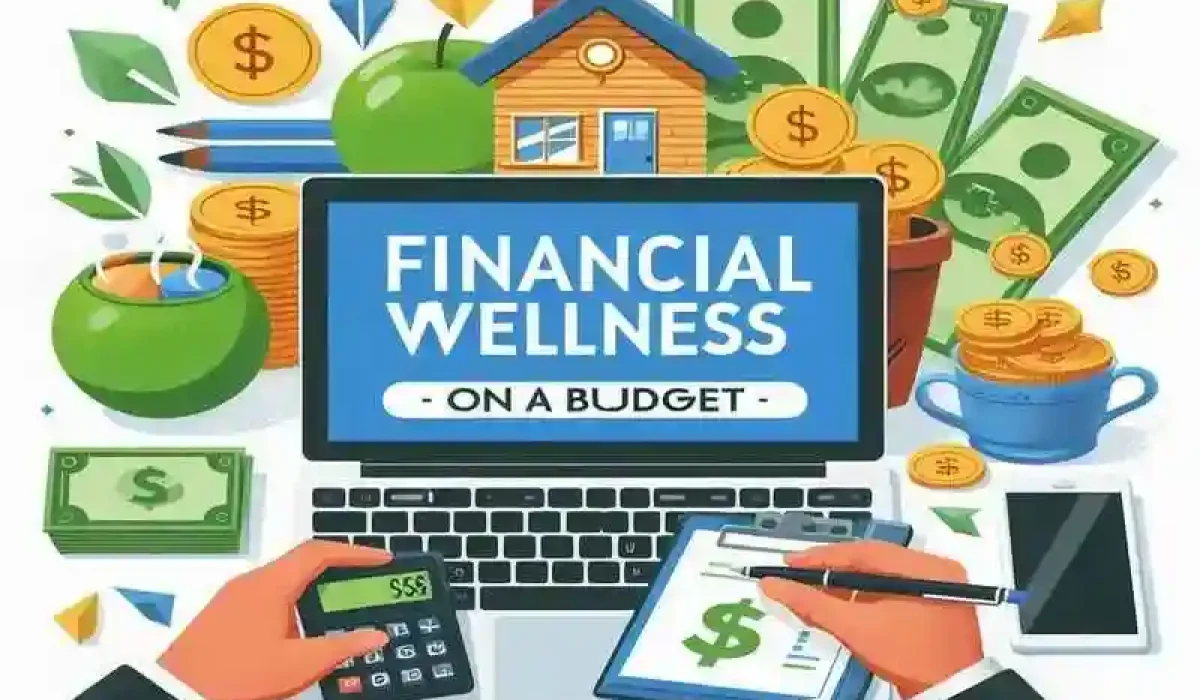Table of Contents
Introduction: The Importance of Financial Wellness
Financial wellness is a crucial aspect of overall well-being, but it can be a daunting challenge, especially for those on a tight budget. The good news is that with the right strategies and a little bit of discipline, you can achieve financial stability and security, even with limited resources. In this article, we’ll explore practical, actionable steps you can take to improve your financial wellness on a budget.
Understanding Your Current Financial Situation
The first step towards financial wellness is to understand your current financial situation. This means taking a close look at your income and expenses, as well as your existing debts and assets.
Tracking Your Income and Expenses
Start by creating a comprehensive list of all your sources of income, including your primary job, any side hustles or gig work, and any other sources of revenue. Then, track your expenses, categorizing them into essential (rent, utilities, food) and non-essential (entertainment, dining out) categories. This will give you a clear picture of where your money is going and help you identify areas where you can cut back.
Identifying Spending Patterns
Once you have a clear understanding of your income and expenses, take a closer look at your spending patterns. Are there any areas where you tend to overspend or make impulsive purchases? Identifying these patterns can help you make more informed decisions about where to cut back.
Budgeting for Financial Stability
With your financial information in hand, it’s time to create a budget that will help you achieve financial stability.
Creating a Realistic Budget
Start by setting a budget that aligns with your income and expenses. Be realistic about your spending, and don’t forget to allocate funds for savings and debt repayment. Remember, your budget should be flexible and adaptable to your changing needs.
Prioritizing Needs vs. Wants
When creating your budget, it’s important to distinguish between your needs and your wants. Prioritize your essential expenses, such as rent, utilities, and food, and then allocate funds to your non-essential expenses, such as entertainment and dining out, only after your essential needs are covered.
Automating Savings and Bill Payments
One of the best ways to ensure that you’re saving and paying your bills on time is to automate these processes. Set up automatic transfers to your savings account and schedule your bill payments to be deducted from your checking account.
Effective Debt Management
Debt can be a significant obstacle to financial wellness, but with the right strategies, you can effectively manage and reduce your debt.
Strategies for Reducing Debt
Start by prioritizing your debts, focusing on the ones with the highest interest rates first. Consider consolidating your debts into a single, lower-interest loan, or negotiate with your creditors for better terms. Additionally, try to make more than the minimum payments whenever possible to pay off your debts faster.
Negotiating with Creditors
If you’re struggling to make your minimum payments, don’t be afraid to reach out to your creditors and negotiate. Many creditors are willing to work with you to establish a more manageable payment plan or reduce your interest rates.
Consolidating Debt
Debt consolidation can be an effective way to simplify your payments and potentially lower your interest rates. Look into options such as balance transfer credit cards or personal loans with lower interest rates.
Building an Emergency Fund
An emergency fund is a critical component of financial wellness, as it can help you weather unexpected expenses without going into debt.
Determining Your Emergency Fund Target
Aim to save enough to cover 3-6 months’ worth of essential expenses. This will give you a buffer to handle unexpected car repairs, medical bills, or job loss.
Saving for Emergencies
Automate your savings contributions, even if it’s a small amount each month. Over time, these contributions will add up, and you’ll have a solid emergency fund to fall back on.
Maximizing Your Income
In addition to managing your expenses, it’s also important to explore ways to increase your income.
Exploring Side Hustles and Gig Work
Consider taking on a side hustle or gig work, such as freelancing, delivering for a rideshare service, or selling handmade goods online. These extra income streams can help you boost your savings and pay down debt.
Negotiating a Raise or Seeking a Higher-Paying Job
If you’re in a position to do so, don’t be afraid to negotiate a raise with your current employer or explore higher-paying job opportunities.
Investing for the Future
While it may seem out of reach on a tight budget, investing for the future is an essential component of financial wellness. For example, to achieve Financial Freedom through Real Estate
Understanding Investment Basics
Start by educating yourself on the basics of investing, including the different asset classes (stocks, bonds, mutual funds, etc.) and the various investment strategies (diversification, risk tolerance, etc.).
Researching and Selecting Investment Options
Once you have a basic understanding of investing, research and select investment options that align with your financial goals and risk tolerance. Consider starting with low-cost index funds or robo-advisors, which can provide diversification and professional management at a relatively low cost.
Conclusion: Embracing Financial Wellness on a Budget
Achieving financial wellness on a budget may seem like a daunting task, but with the right strategies and a commitment to financial literacy, it’s entirely possible. By understanding your current financial situation, creating a realistic budget, managing your debt effectively, building an emergency fund, and maximizing your income, you can take control of your Personal finances and pave the way for a more secure and fulfilling future. Remember, financial wellness is a journey, not a destination, so be patient with yourself and celebrate your progress along the way.




